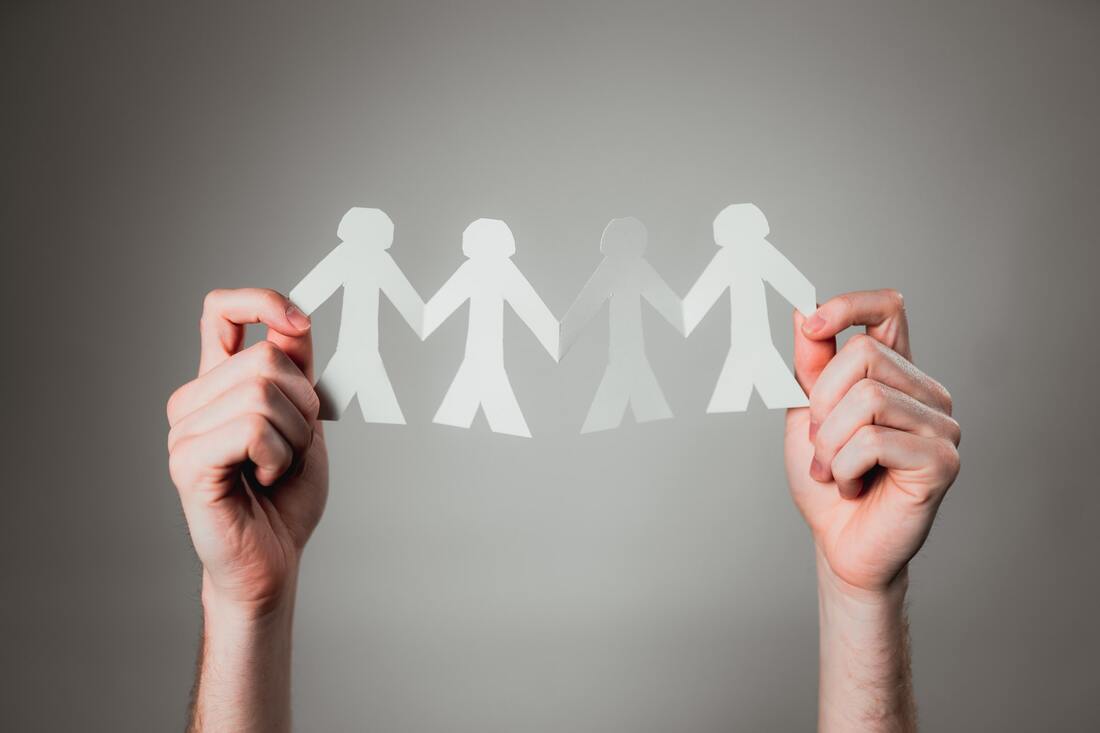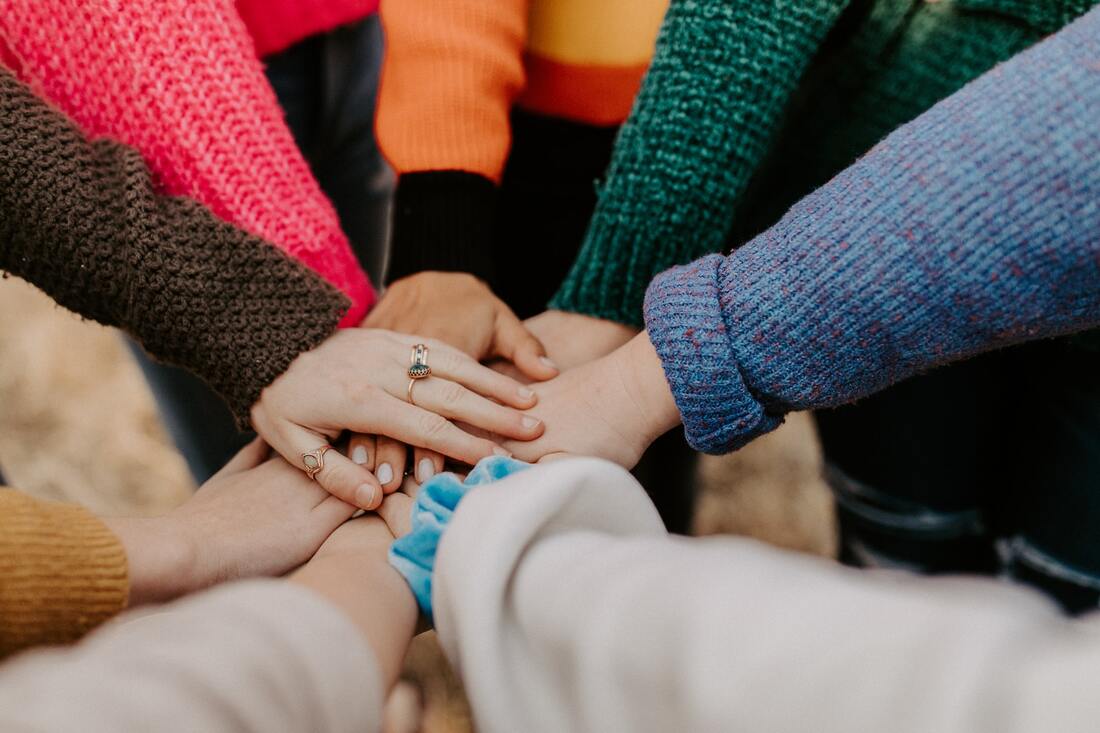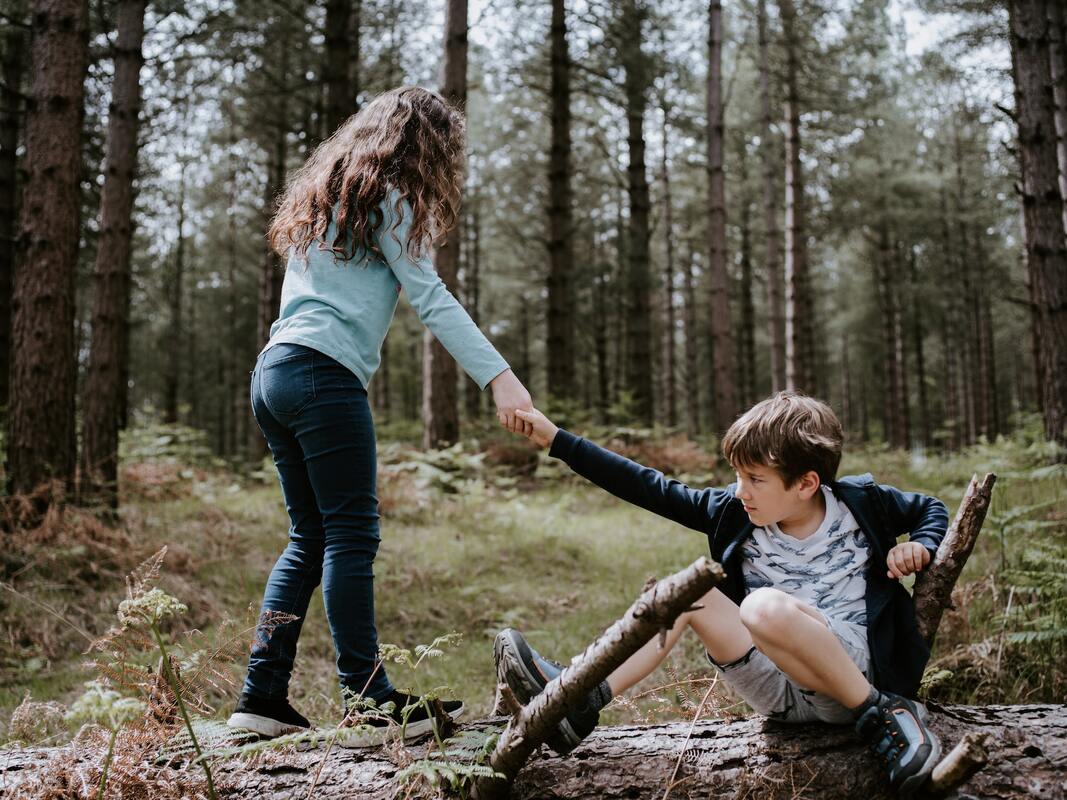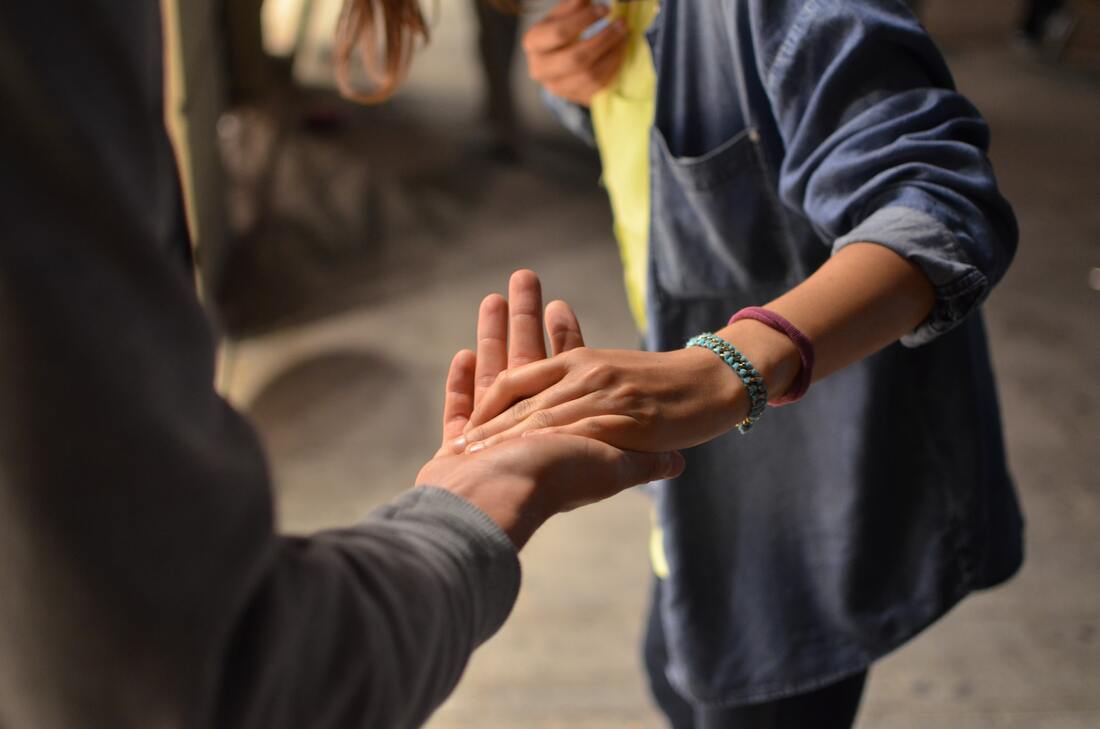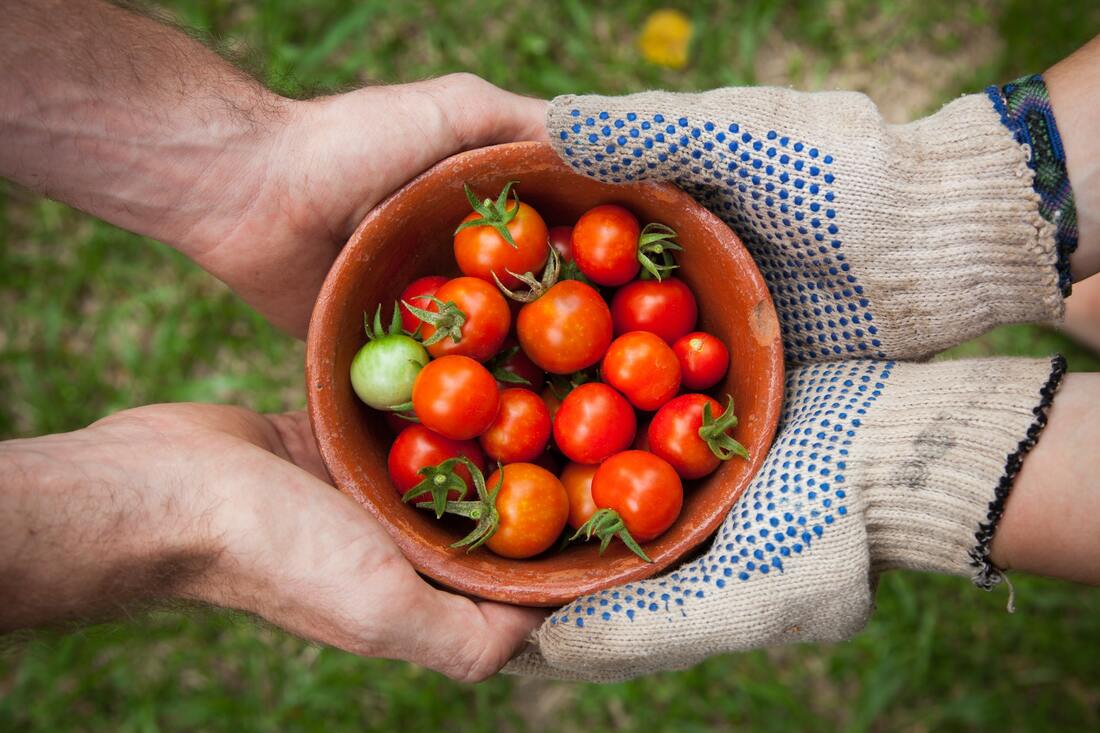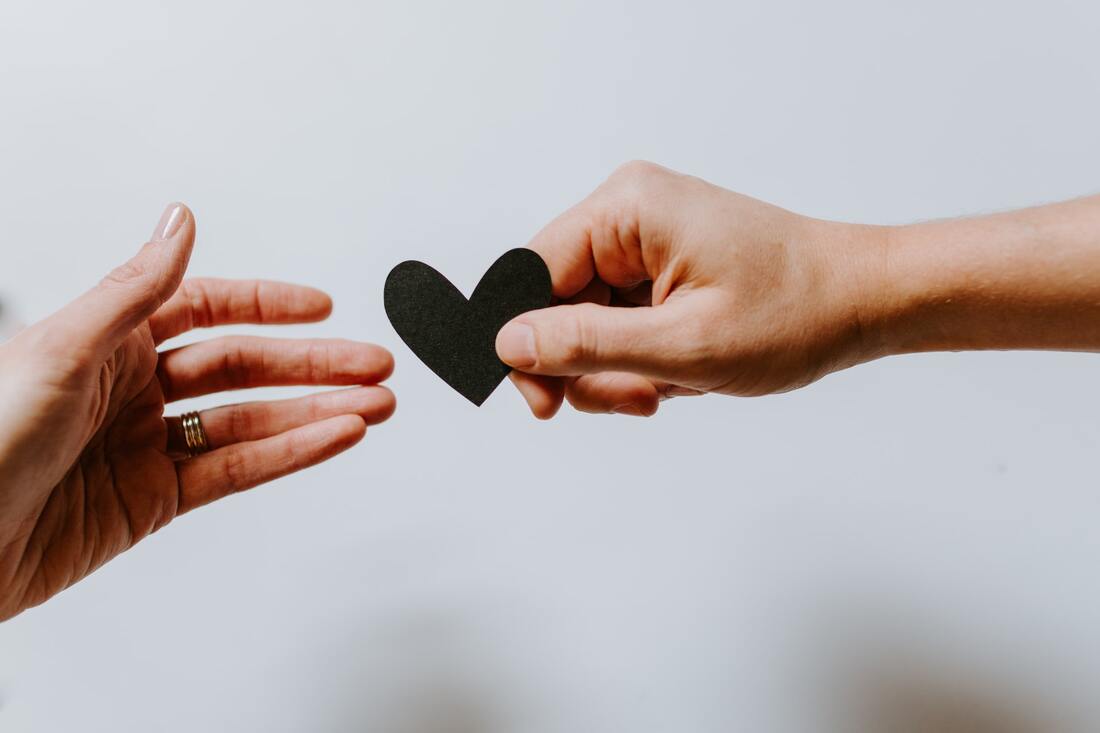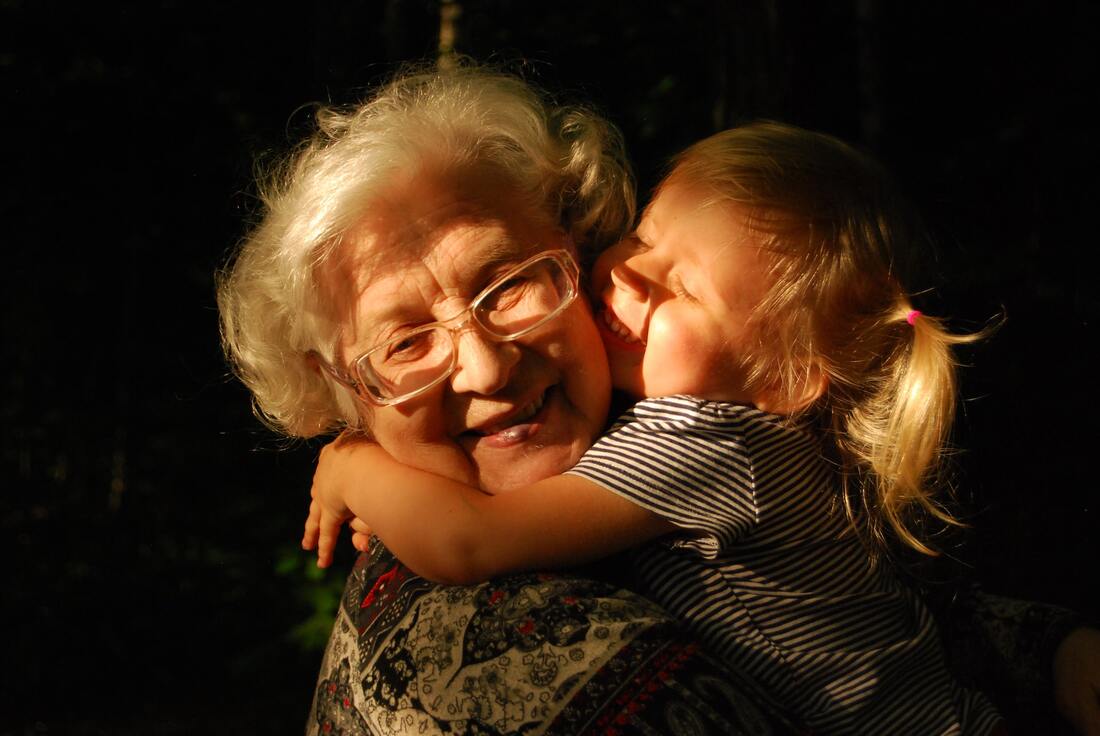|
If you’re into the rational pursuit of love and truth, you just might be a humanist. Humanism is the belief in the capacity of our species to be rational and kind, and in our ability to see ourselves and each other as the infinitely complex and miraculously improbable organisms we all are without anticipation of eternal punishment or reward. Humanistic psychology is an approach that prioritizes a holistic understanding of an individual and seeks to aid them in living an authentic, meaningful life. It emerged out of the convergence of two philosophical disciplines: phenomenology and existentialism (Buhler, 1971). Let’s dig into some of the primary components of humanism a little more.
Humanistic Psychology: PhenomenologyThe primary tenet of phenomenology, particularly when applied to psychology, is that the whole subjective human experience is more important than its parts. In other words, to try to understand ourselves solely in terms of mechanisms or according to various theoretical frameworks is a little like trying to describe the colors of the Grand Canyon at sunset by talking about wavelengths of light and what happens when photons hit your retina. The mechanisms of color vision are really fascinating and knowing how it works can certainly be useful, but it doesn’t help you to understand the most important part, which is what it’s like to experience the colors of the Grand Canyon at sunset. Humanistic Psychology: ExistentialismThe question of “what shall I do about it” is one of the primary concerns of existentialism. Existentialism is a little like phenomenology in that for both disciplines the reality and primacy of the human experience is a central theme, but existentialism places a particular emphasis on action, on how you should respond to existence. Existentialism also stresses the importance of the context in which a person exists. Martin Heidegger, a 20th-century existential-phenomenological philosopher, termed this notion being-in-the-world, by which he meant that an individual and the world in which they live are inextricably linked. We’ll get back to the idea of being-in-the-world a little later on. The convergence of these two schools of thought produced the basic questions from which humanistic psychology proceeds (Schneider & Längle, 2000):
In SumHumanism is an approach to life—a framework to guide our behavior—that prioritizes understanding yourself, your reality, and those around you through inquiry, reason, and experience, with the aim of living a meaningful life and being fully human. A humanist perspective grants an individual the autonomy to purposefully move through the world in search of beauty and connection, and the responsibility to accept reality honestly and compassionately as it really is. In essence, a humanist is anyone who is curious, open-minded and has a compelling belief in the goodness and potential of humanity. References
Learn about what self-forgiveness means and how to forgive yourself for past mistakes. No human is perfect. In fact, human fallibility is one of the great enduring truths of the universe. So, if we know that mistakes are an inevitable part of life, then why is it so hard to forgive ourselves for them? How do we manage the feelings of guilt or shame over the mistakes we have made? And how do we allow ourselves to move forward after we’ve betrayed someone we love or treated someone unjustly? What is Self-Forgiveness?Self-forgiveness has been defined in a variety of ways. It’s been described as “a willingness to abandon self-resentment in the face of one’s own acknowledged wrong while fostering compassion, generosity, and love toward oneself” (Enright, 1996) as well as “a shift from a fundamental estrangement to being at home with one’s self in the world . . . from an attitude of judgment to embracing who one is” (Bauer et al., 1992). Though researchers have not reached a consensus on a single, precise definition of self-forgiveness, most definitions include the following characteristics (Webb et al., 2017): Self-AcceptanceOne of the primary features of self-forgiveness is self-acceptance. Some researchers even suggest that self-forgiveness is more accurately understood as a form of self-acceptance (Vitz & Meade, 2011). This understanding of self-forgiveness emphasizes accepting your fallibility, recognizing that you are an imperfect person and that you are not defined by your mistakes. Willingness to Accept AccountabilityThis one might seem obvious considering that you can’t forgive yourself if you don’t think you’ve done anything wrong, but it’s a really important component of the process of self-forgiveness and is often the hardest and most painful step. Genuine Effort to ChangeThis is an important factor because it’s the difference between true self-forgiveness and simply “letting yourself off the hook”. The honest desire to learn from your mistakes and to do better in the future is crucial. How to Forgive Yourself for Past MistakesExperts in the study of self-forgiveness suggest that one of the most critical components of self-forgiveness is the ability to “recognize that each person is part of a community of imperfect others who are mostly striving to be the best people they can be” (Jacinto & Edwards, 2011). With our fallibility and good intentions in mind, let’s look at the 4 steps to forgiving ourselves for our mistakes. Steps to Self-Forgiveness: The Four R's
In SumSelf-forgiveness is a skill that, when practiced, allows you to start the next chapter of your story, to let go of the debilitating narrative that says, “I am terrible and unworthy of love and acceptance” and replace it with “I am a fallible and precious human who learned an important lesson which has helped me to become more than I once was.” Each step in this process – taking responsibility, allowing yourself to feel remorse, taking action to repair the damage done, and renewing your values and identity – can all be challenging for their own reasons and may be difficult in different contexts. However, self-forgiveness is a skill that can be learned and, like any other skill, requires practice and intention. As you move through your self-forgiveness journey, here are some affirmations to help you along the way. References
Learn about the benefits of helping others and ways in which we can contribute to the welfare of our fellow humans. The human desire to help others is deeply rooted in our neurobiology (Hurlemann & Marsh, 2016). In fact, neuroscience research has shown that helping others activates the “reward” area of our brains (Moll et al., 2006). In other words, when we do something kind for other people, it feels good. Helping others can be as simple as holding a door for someone or as extraordinary as donating a kidney. No matter how big or small the act, when we are kind and generous to each other, everyone benefits. Let’s take a closer look at the science behind helping others and some of the ways in which we can put more good into the world around us. Researchers often define helping others as the intention or the effect of improving the welfare of another without the expectation of material rewards in return. This means that helping others can refer to well-intentioned behaviors that succeed in improving the well-being of another person as well as the well-intentioned behaviors that fall short of their goal. We can’t always be certain that the help we offer will produce the outcome we expect, but if our goal is to contribute positively to the welfare of our neighbors on planet Earth, it’s always worth a try. The effects of helping others on both the giver and the recipient have been a popular topic of research for decades. There are now numerous studies that demonstrate the psychological benefits of helping others. The body of research is far too vast to describe it all, but here are a few examples.
How to Help OthersThere are as many ways to help people as there are people to help, but here is a list of a few suggestions for how you can help others:
In SumThe ways in which we can help others are limitless. Whether we donate unwanted clothing, volunteer at a senior center, or spend our lives providing humanitarian aid to refugees, our acts of kindness make a difference in the lives of others as well as our own lives. References
Explore the benefits and importance of selflessness. Learn to be more selfless through examples and reasoning. Taking care of your own needs and well-being is important but considering the needs of others can also be beneficial to you. The consideration of others' needs and feelings above your own is called being selfless. People who walk through life with a selfless attitude are emotionally stable, feel in harmony, and experience “authentic, durable happiness” (Dambrun, 2017). Selflessness is important because it can play an important role in our well-being. A 2017 study found that people who demonstrated selfishness had fluctuating levels of happiness while those who demonstrated selflessness enjoyed “authentic, durable happiness” (Dambrum, 2017). Making an effort to shift towards this state of mind could increase the amount—in addition to enhancing the quality—of your happiness. Volunteering may be the first idea that comes to mind when you think about selflessness, and while this is a wonderful practice, it is only one of many ways we can be giving with our time, energy, and love. For example, learning to be more considerate of others can be helpful for many areas of your life including work, marriage, and everyday happiness. Selflessness literally means placing less importance on yourself than on others. It is a state of mind in which you put an equal, or more, amount of consideration towards other people's interests rather than towards your own. Selfless people recognize the needs and feelings of others and try to show kindness in their actions. A selfless person can be described as:
If anyone has ever said that you are a selfless person, consider it a compliment. Many great people throughout history have been described as selfless—people such as Mother Teresa and Martin Luther King Jr. These two pillars of history completely put the well-being of others above their own personal interests. It’s okay if you feel like you need more practice being selfless. Keep reading if you would like to try to learn how to be more considerate of others. ExamplesActs of selflessness can range from small everyday gestures of kindness to large donations of time or money. The following are some examples of selflessness in everyday life that you may have performed or experienced before:
Whether large or small, any gesture of selflessness has a positive ripple effect outward. I know that when I experience or perform a small gesture of kindness, my day immediately brightens up. Are there ways you could incorporate more small acts of everyday kindness into your life? How to Be More SelflessWould you like to try to be more selfless? We could all benefit from showing and receiving a little more kindness in our everyday interactions. Here is how you can get started:
Learning to be more selfless is not an overnight process. The more you practice recognizing when you are acting with selfish motivation, the easier it can become to change that to selfless action. No one is perfect but we do have the power to build new skills and develop new traits if we put effort into it. Final Thoughts on SelflessnessSelflessness is a state of mind that can help you achieve “authentic, durable happiness” (Dambrun, 2017). Being kind by considering the needs and feelings of others is how you selflessly move through the world. Acts of selflessness do not have to be large gestures—small, everyday acts of kindness have a similar ripple effect throughout the world. Try to learn to celebrate the differences we all share and appreciate other people’s points of view to act more selflessly, and you just might see an increase in the quality of your happiness and relationships. References
What drives people to be good? Learn about altruism, what it is and how to incorporate it into your life. For the most part, we all try to be “good” people. We try to keep in touch with our friends and family and tend to look out for each other in the ways we can. Whether it be something as simple as helping an elderly person cross the road or as dramatic as trying to pull someone out of a car wreck, people have a habit of wanting to help one another. However, we know that not all people are good or at least don’t make good choices all the time. So why do people perform great displays of compassion, kind-heartedness, and benevolence? Perhaps more importantly, what drives them to such acts – selflessness or other reasons motivated by darker self-interests? To start, what do we mean when we say altruism? The term “altruism” was popularized as the opposite of egoism by the French philosopher Auguste Comte (Etymology Dictionary). Altruisme, as it is called in French, was derived from the Latin alteri which means “somebody else” or “other people” (Ciciloni, 1825). This makes sense when we look at the definition of altruism—it is defined generally as the action of acting for the benefit of others—an unselfish concern for other people (Merriam-Webster, n.d.). Basically, altruism is helping out others with no expectation to get anything out of it The PsychologyPsychological altruism is believed to be primarily related to the empathetic desire to help people who are suffering. People have studied altruism from a psychological perspective, trying to find out why a person acts without motives of self-interest. Here are a couple theories that psychologists have:
The AnthropologyAltruism from an anthropological point of view is the moral notion that we help each other due to our inherent need for cooperation for social welfare (Cortes & Dweck, 2014). For example, when you give up your seat on a bus for an elderly person, you do so because it is in the interest of social and moral well-being. The NeurobiologyOther scientists try to see how altruism originates in our brains. Researchers have shown that our brains can actually develop in a certain way to be more altruistic than others (Klimecki et al., 2014). More altruistic people are able to recognize fear easily in others and are better able to detect when someone is in danger. This is due to the brain region called the amygdala (also known as the emotional center of our brain) that activates our expressions of fear and thus we can act to protect or help others who feel fear. We all have the hardware to help others but whether we develop it is another story. The BenefitsAltruism can benefit us in a variety of ways:
How to Be More AltruisticHere are some tips to help you be more altruistic:
Final Thoughts on AltruismThere is no one way to be altruistic – it can be anything from supporting our family to helping complete strangers. Or it can be anything from helping someone cross the road to pulling someone out of a fire – these are all ways to help others with little to no self-benefit. References
Discover examples of generous actions and how to become more generous. Generosity is voluntary, unselfish giving of time, money, attention, or other resources; generous people are especially willing to share their resources with others. Although a generous gift can benefit the giver, it’s mainly intended to benefit the recipient, and there isn’t necessarily any expectation of a return. The term “generosity” characterizes both the act of giving and the spirit of the gift. Generous acts can be as dramatic as anonymously donating millions of dollars to a hospital or as mundane as volunteering an afternoon at an animal shelter. Generosity, especially anonymous generosity that probably won’t be reciprocated, may seem irrational under evolutionary psychology. This behavior may have evolved, however, to promote cooperation in uncertain conditions (where it’s unclear whether a single meeting will blossom into a steady relationship) (Delton, Krasnow, Cosmides, & Tooby, 2011). One (extreme) example of generosity is anonymously donating a kidney to a stranger. Here are some more examples:
How to Be a More Generous PersonYou can incorporate generosity into your life in many ways. It’s important to find a generosity practice that works for you and fits into your budget and schedule–you don’t have to deprive yourself or give up your boundaries to practice generosity. Equally, there’s no rule that you can’t benefit from your generosity toward others. Here are several strategies you can try to practice more generosity:
In SumWhenever you offer your valuable resources primarily to benefit someone else, you are practicing generosity. You can be generous with time, money, possessions, attention, influence, and anything else you value. Generosity doesn’t have to be a sacrifice–instead, it can be a win-win situation that helps everyone involved, strengthens relationships, and makes the world (even a little bit) brighter. References
Here’s how to apologize when you are wrong and how not to apologize too much. Social support is a pleasurable and often necessary form of connection in our lives. Nevertheless, from time to time, all of us have conflicts in our relationships that may need to be remedied. In most cases, a good apology can help you and the other people involved resolve the issue. We hear the words, “I’m sorry”, all the time. We may utter the words if we accidentally bump into someone on the street or even if we didn’t hear someone properly. But the phrase, “I’m sorry”, isn’t always just about simple mistakes. Sometimes we can really hurt the people in our lives with our words and actions, which may require an apology. Apologizing is the act of expressing regret or remorse to someone when you have done something wrong. A sincere and genuine apology goes beyond just saying “I’m sorry.” A good example of an apology can include the following ingredients:
Apologies can help the wrongdoer take responsibility for their actions and help reduce any guilt they may hold about their behavior. Subsequently, a good apology can make the person who was wronged feel better, heard, and understood. Apologies can be a great source of building communication between you and your relationships and can allow an opportunity to learn from your mistakes (Howell, Turowski, & Buro, 2012; Schumann & Dweck, 2014). How to Apologize SincerelyThere are several examples of contexts in which apologies may be necessary. For example, maybe you missed an important deadline on a project at work and failed to communicate any challenges you had. Perhaps this mistake lost you a client or added more work for a coworker or supervisor. You are human and mistakes happen. However, an apology could be necessary to clear the air about miscommunication and allow you the opportunity to offer ways to help. Whether you are at work, school, at home with your family, out with your partner and friends, or interacting with a stranger, mistakes can happen anywhere. Typically, when you make a mistake or hurt someone, it is important to apologize to the person or people affected. Apologizing to others can be a really difficult experience. A gentle reminder that it is okay to be nervous, anxious, or worried about how the apology will go. We are here to help provide you with concrete examples of how to apologize to others. A good apology could include the following phrases:
As you may have noticed, these four sentences match the ingredients of a good apology that were listed above. It is important to note that every apology may not follow this exact formula, as your apology will likely have to be tailored to the situation and the person you are communicating with. However, this is a good basis to start from and later alter if you are trying to find the right words for your apology. A critical key to apologizing sincerely is saying your apology with empathy. It may not have been your intention to hurt someone, but you still made an impact on them that caused hurt. Being able to see how they felt in this situation and understanding how it could have affected them is what being empathetic encompasses. Examples
In SumHopefully, you don’t find yourself in frequent situations where apologies are necessary. But in case you do, remember that even though apologizing can be scary, it can also help you learn and improve your relationships. References
Let’s take a look at some words of kindness we can use to bring more kindness to the people closest to us. We may think that saying something nice and saying something kind are the same thing, but kindness is a bit more multifaceted. Let’s use an example. Maybe you’re at a family party that your cousin hosted. She made a huge feast for everyone at the party, but you can tell that she’s exhausted and seems like she might need support. Let’s say your sister is the nice one, but you’re the kind one. What do you think each of you would say to your cousin? Your nice sister might say, “thanks for the food!” But, maybe you say, “it must have taken you so long to make this delicious meal, how can I help you clean up?” Do you see the difference? Words of niceness are saying agreeable things (which are totally fine comments to give!), but words of kindness often come from a place of care, benevolence, and support (Binfet, 2015). When we say words to be kind, we are offering the receiver of our kindness genuine words that show appreciation, helpfulness, and compassion. Words of kindness come from a deeper goal to give yourself emotionally to others. Kindness for a FriendNo matter how long we’ve known someone or how close we are to our friends, it’s important to remind them how important they are and continue to show up for them when they need a friend. Here are some words of kindness for these special people in our lives.
Kindness for StudentsNo matter how young students may be, learning to balance their home life, friends, and school work can be tough. Whether you are a teacher, a daycare specialist, a parent, an older sibling, or a fellow student yourself, here are some words of kindness for the folks in your life who are in school.
Kindness for a CoworkerWhether we see our coworkers in the office every day or they appear in the small Zoom boxes on our screens, we spend a lot of time with the people we work with. While we may think it’s naturally easier to be kind to the people in our personal lives, those who are in our professional worlds deserve kindness too. Here are some words of kindness you may consider using for your coworkers.
In SumWhen we use our care and compassion for others through communication, we not only spread kindness to them, but we help create a domino effect that continues the cycle of being kind. Words are merely just one way to express kindness to the people in your life—or maybe even the strangers you see walking down the street. I gently challenge you to recognize someone in your life today and tell them something meaningful and kind. Think about how it makes you feel and try to gauge their reaction, too. Reference
Let’s look at some fun facts about why we laugh and its benefits. Laughing is an action that can be looked at physiologically, psychologically, and socially. Physiologically, we know that we laugh because our bodies release a physical reaction from our respiratory system that lets out an auditory sound similar to “ha-ha” or “he-he” (Stearns, 1972). Psychologically, we most often laugh because we are confronted with some positive emotion, such as joy or amusement. However, laughing may also be a psychological response when we are surprised or embarrassed (Gregory, 2013). And from a social context and human behavior standpoint, laughter is often triggered by positive interactions with other humans which can offer bonding, emotional intimacy, and acceptance from others (Scott et al., 2014). Laughter research suggests that the evolution of human laughter began more than ten million years ago (Ross, Owren, & Zimmermann, 2009). However, as psychological, and scientific research has advanced, particularly in the past century, gelotology, or the study of laughter, is still a growing field of study. Here are some historical tidbits about laughter, dating back to the late 1800s and early 1900s.
In SumEven though laughter has most likely been a daily occurrence in our lives since we were wee-little infants in diapers, hopefully, you learned something new today about laughing. References
Discover why hugs are important and the magic number of hugs we need in one day. Let’s take a moment to think about some of the contexts we use hugging. Maybe you’re meeting up with a friend or family member and it is your way of greeting them. Perhaps you’ve had a bit of a rough day and need a hug from your partner or child when you arrive home. You may find yourself giving hugs (or asking for them) when you’re feeling affectionate or need support. Regardless of your reasoning, for many of us, hugs can be an essential source of care and comfort. Many of us likely learned how to hug at a very young age. Whether it was hugging our families as toddlers or giving our tiny friends hugs in elementary school, we know that to hug, we extend our arms around someone else. Hugs are a form of embracement or endearment and can often be used to express affection or care toward others. Hugs are not limited to just two people, however. Participating in a hugging exchange with more than one other person may be referred to as a group hug. On the other hand, it is not uncommon for people to also hug themselves—especially when they feel sad or lonely. Hugs do indeed make us feel better. Have you ever given or received a hug and instantly felt better? That feeling is not just in your head. In fact, there are several health benefits of hugs that can positively impact you emotionally and physically. Let’s take a look at a few important benefits. Hugs can:
Let’s take a closer look at some more research on hugs, their importance, and their impact on well-being. Here are some facts to check out:
Final Thoughts on HugsAlthough there is no concrete number of hugs we require each day, if desired, you may find it beneficial to participate in hugs more often. Consider taking sometime today and be intentional with your loved ones through hugs (with consent, of course). References
|
AuthorPamela (Pami) Parker currently serves as a holistic practitioner, coach and teacher. Her intention is to be a compassionate guide to those who choose to experience a healthier, happier and more peaceful way of life. Categories
All
|
Company Details
The Self-Care Cafe is a member of The Conscious Center
Dutch Chamber of Commerce (KvK) Registration #64532593
Taxation (VAT) Number: NL670496157B01
Privacy Policy
The Self-Care Cafe is a member of The Conscious Center
Dutch Chamber of Commerce (KvK) Registration #64532593
Taxation (VAT) Number: NL670496157B01
Privacy Policy
